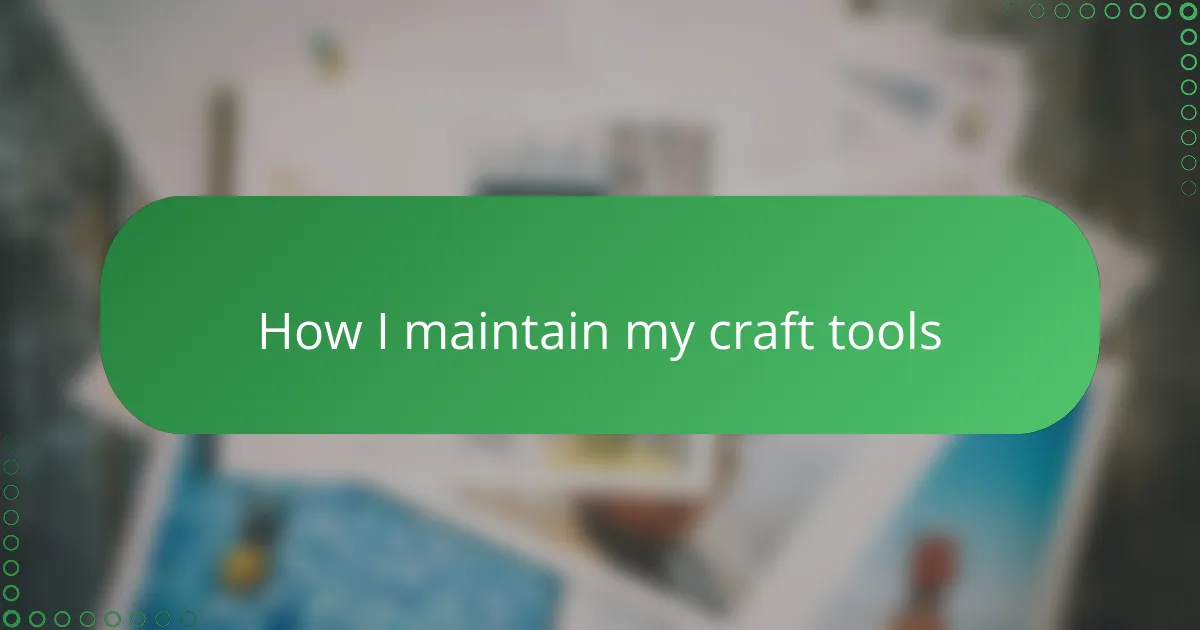Key takeaways
- Handmade paper crafts connect creativity with tradition, offering a therapeutic and mindful experience.
- Using the right tools, such as sharp scissors and a self-healing cutting mat, elevates the quality of paper projects.
- Regular maintenance, including cleaning and proper storage, prolongs the lifespan and improves the performance of craft tools.
- Routine practices like sharpening blades and organizing tools foster a conducive environment for creativity and crafting enjoyment.

Introduction to handmade paper crafts
Handmade paper crafts have always fascinated me because they blend creativity with tradition in a unique way. There’s something deeply satisfying about transforming simple sheets of paper into beautiful, tactile art. Have you ever paused to appreciate the delicate textures and subtle imperfections that only handcrafted paper can offer?
Working with handmade paper is not just a craft; it’s a journey that connects you to centuries of artistry. Each piece carries a story, woven through fibers and colors, making every creation feel truly personal. I often find myself lost in the process, discovering new inspiration with every fold or layer I add.
What draws many of us to this craft is how it invites patience and care—qualities that modern life often pushes aside. The hands-on nature of handmade paper projects encourages mindfulness, turning crafting into a therapeutic escape. Isn’t it incredible how such simple materials can spark so much joy and creativity?
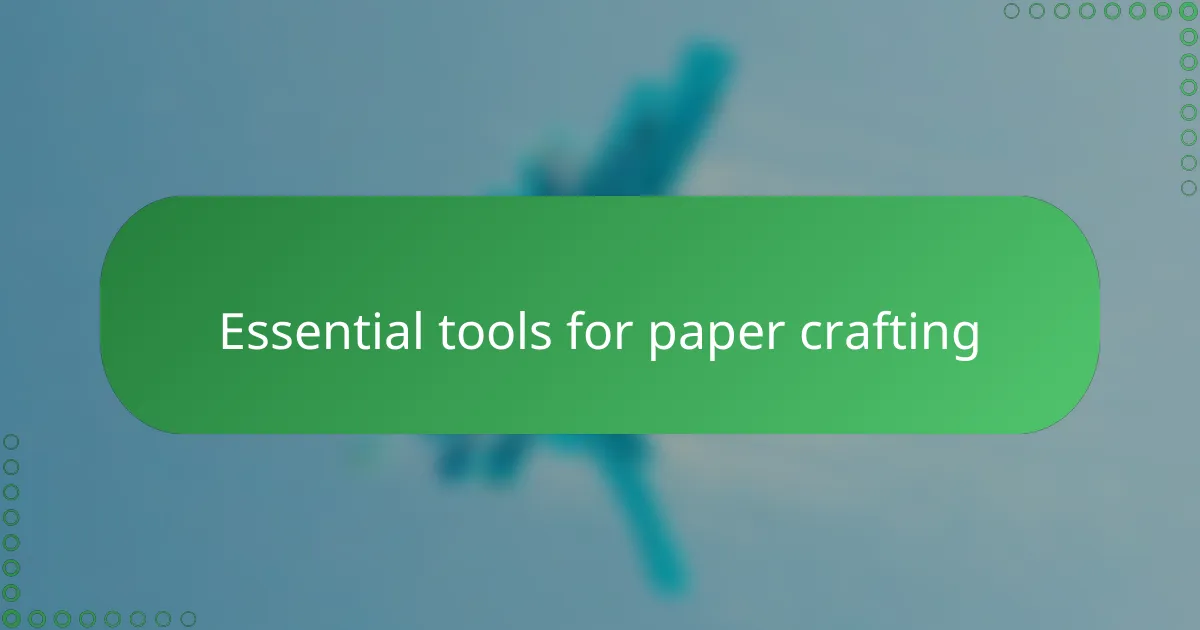
Essential tools for paper crafting
When I first started with paper crafting, I quickly realized that having the right tools makes all the difference. A good pair of sharp scissors and a sturdy craft knife are my go-to essentials; they help me achieve clean cuts that elevate the final look. Have you ever tried cutting intricate shapes with dull blades? It’s frustrating, and the paper often ends up torn or uneven, which can really take away from the delicate nature of handmade paper.
Another tool I can’t live without is a self-healing cutting mat. It protects my work surface and keeps my blades sharp longer, which means less frustration and more precision. Over time, I’ve seen how investing in these simple tools not only improves the quality of my work but also keeps me motivated to experiment. Isn’t it amazing how a small tool upgrade can completely change your crafting experience?
Finally, I always keep tweezers and bone folders close by. Tweezers help with placing tiny embellishments without crushing the paper, while a bone folder gives folds a crisp, professional touch. These tools may seem minor, but their impact on the final piece is huge. Don’t you love how a small, thoughtful detail can turn a good paper craft into something truly exceptional?
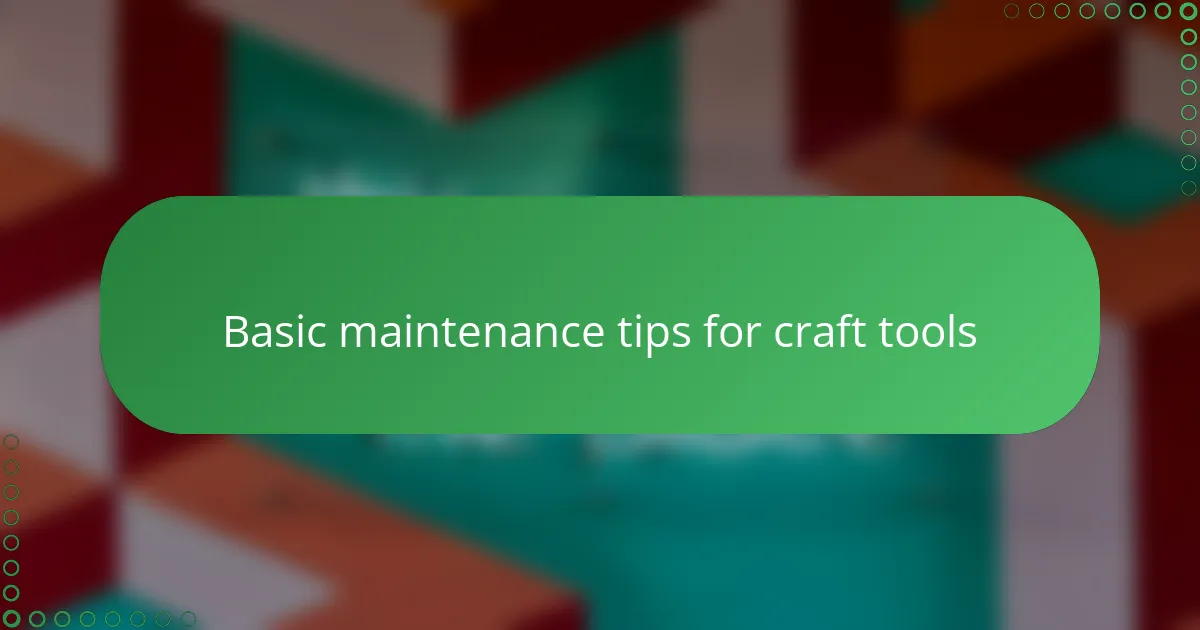
Basic maintenance tips for craft tools
Keeping my craft tools in top shape is something I never overlook. After each project, I make it a habit to clean my scissors and craft knives, wiping away any tiny scraps or adhesive residue. Have you noticed how just a little buildup can make cutting frustrating? I’ve been there, and it’s a quick cleanup that saves a lot of headaches.
Sharpening blades regularly is another simple step that pays off big time. I once tried to push through a project with dull scissors, and it was honestly a struggle; the cuts were rough, and my patience thin. Now, a quick sharpen session before I start keeps everything smooth and precise—it feels like the tools are ready for anything.
Lastly, storing tools properly matters more than I expected. I keep everything in a dedicated box or pouch, so nothing gets lost or damaged. When was the last time you found a bent scissors or a chipped bone folder and wished you’d been more careful? Keeping tools organized and protected means they last longer and work better every time I pick them up.
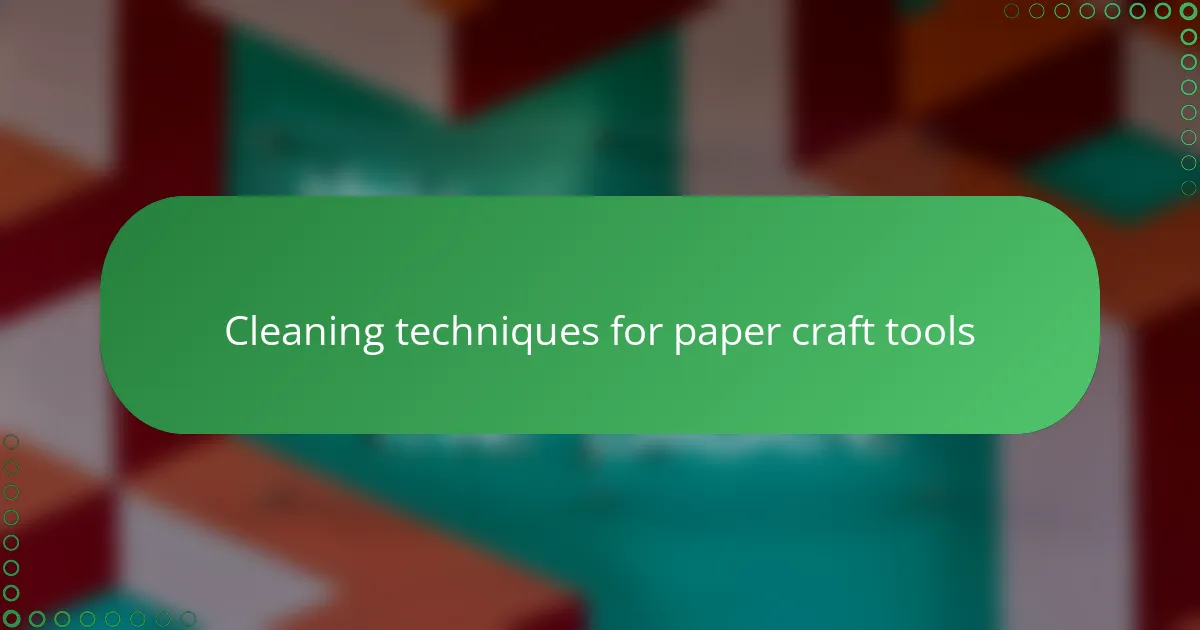
Cleaning techniques for paper craft tools
Cleaning my paper craft tools has become a small ritual I genuinely look forward to. For scissors and craft knives, I use a soft cloth dampened with a bit of rubbing alcohol to wipe off any sticky glue or paper dust. Have you ever tried cutting with tools gummed up by residue? It’s frustrating, and that quick wipe brings them back to life instantly.
I’ve also found that gently scrubbing the bone folder with a mild soap and warm water removes any oils or dirt from my hands, helping maintain that smooth finish that makes folds crisp and clean. It’s a simple step, but it keeps the tool feeling just right every time I use it. Don’t you love how small touches like these show up in the final product?
One trick I swear by is cleaning tiny nooks with a soft-bristled brush—especially on my cutting mat and around tweezers. Removing tiny paper bits prevents any unwanted snags or scratches later on. Doesn’t a well-kept workspace make crafting feel more inspiring and less of a hassle? For me, that little effort pays off big when creativity flows uninterrupted.

Storing tools properly for longevity
Proper storage of craft tools is something I truly believe makes a huge difference in how long they last. I always make sure my scissors, knives, and bone folders have their own special place—usually a sturdy box or a soft pouch—so they’re protected from knocks and dust. Have you ever grabbed a tool only to find it dull or bent because it was tossed carelessly? That disappointment is one I try hard to avoid.
I’ve found that keeping tools separated also prevents them from banging into each other and dulling the blades. It might sound simple, but using small compartments or individual sleeves within my storage box has saved me more than once from having to replace precious tools. Imagine the frustration of ruining a favorite knife just because it got scratched or chipped in a jumble—that’s a mistake I don’t want to repeat.
One small habit I cherish is always storing tools right after cleaning or sharpening them. It’s satisfying to see a neat, organized toolkit ready for the next project. Doesn’t that little sense of order make you more excited to start crafting? For me, it’s a subtle way to honor the tools that help bring my paper creations to life.
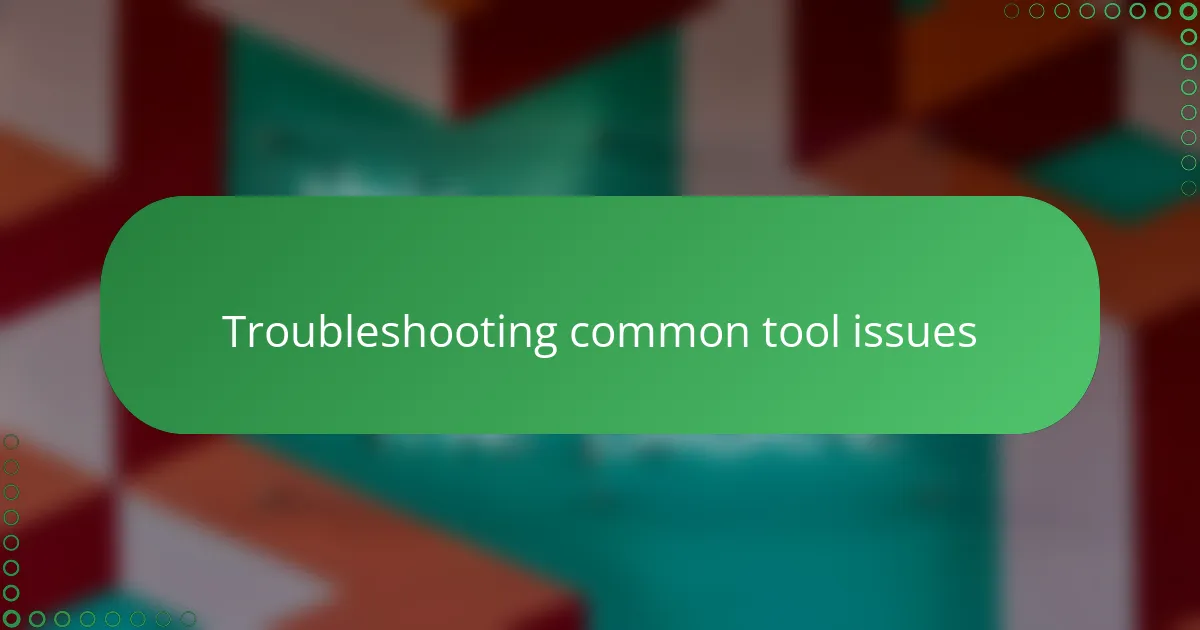
Troubleshooting common tool issues
One of the most common issues I’ve faced is dealing with blades that just don’t cut smoothly anymore. I remember a time when a dull craft knife ruined an entire sheet of delicate paper, and it was a genuinely frustrating moment. Have you ever struggled with tools that feel like they’re working against you? Sharpening or replacing blades promptly usually gets me back on track—and it’s surprisingly satisfying to hear that fresh, clean slice.
Sometimes, my scissors get sticky from adhesive residue, and that subtle gumming can slow down the whole process without me even realizing it at first. Wiping them with a bit of rubbing alcohol usually does the trick, but the difference between a sticky, sluggish tool and a slick, smooth one is night and day. Doesn’t it feel great when your tools practically glide through the paper again?
Occasionally, I find that tiny scraps or bits of paper get trapped between tool parts, especially in tweezers or around hinge points. It’s a small annoyance that can throw off my precision, and I’ve learned the hard way how a quick clean with a soft brush can save the day. Have you noticed how little things like this impact your crafting flow? Taking a moment to troubleshoot these minor glitches keeps the creativity flowing without interruption.
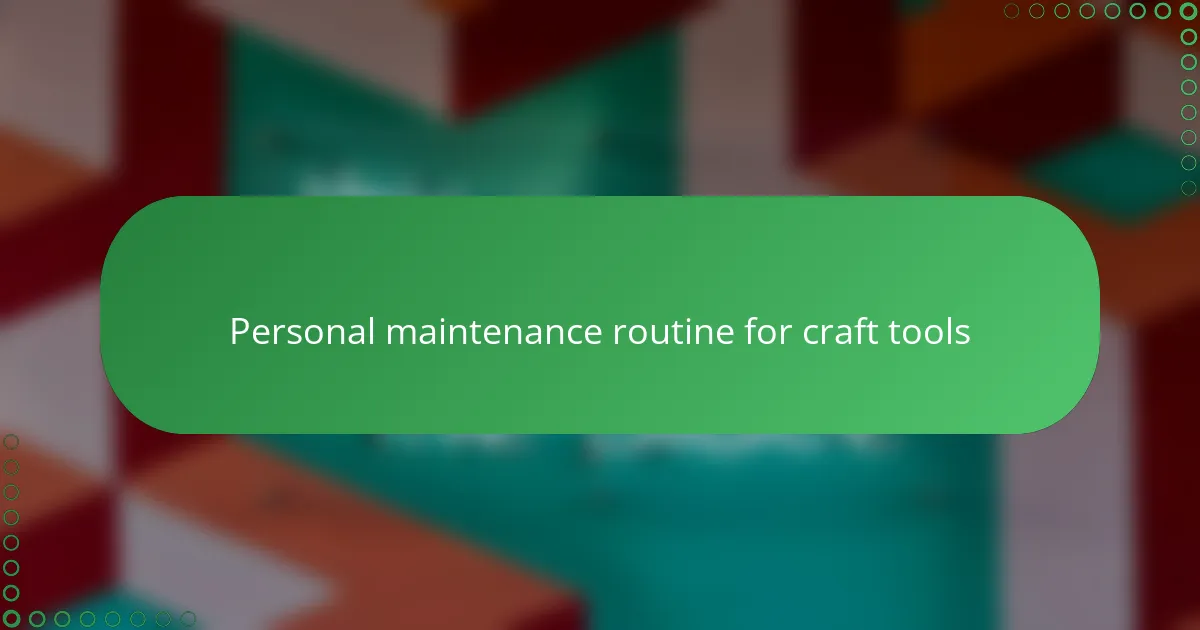
Personal maintenance routine for craft tools
I start my maintenance routine right after each crafting session because I’ve learned the hard way that letting residue build up only makes my tools harder to use later. When I wipe down my scissors and knives carefully, it feels like I’m giving them a reset—a fresh start that makes cutting so much smoother. Have you ever noticed how a quick clean instantly changes how your tools perform?
Sharpening is another non-negotiable step for me. I remember a frustrating afternoon trying to cut intricate shapes with dull scissors—it was almost like wrestling the paper instead of working with it. Now, that quick sharpen before I dive in feels like tuning an instrument, and it transforms the whole experience.
I also pay close attention to how I store my tools because it’s surprising how much damage careless handling can cause. Keeping each tool in its own snug spot protects the blades and prevents frustrating mishaps, like bent tips or chipped edges. Doesn’t it feel satisfying to open your kit and see everything neat and ready to go? For me, that order sparks creativity even before the first cut.
